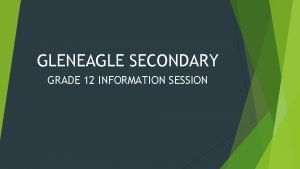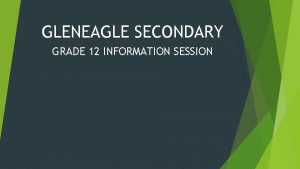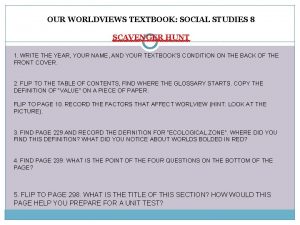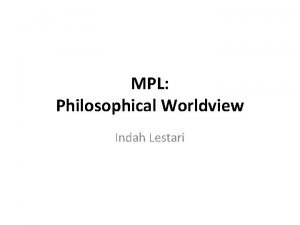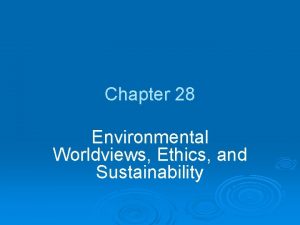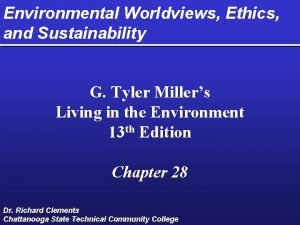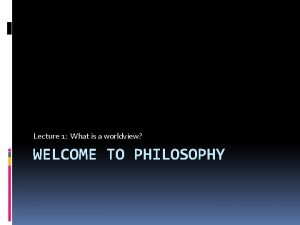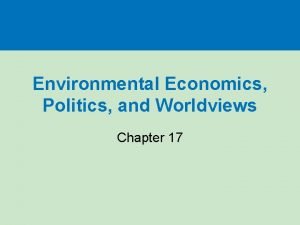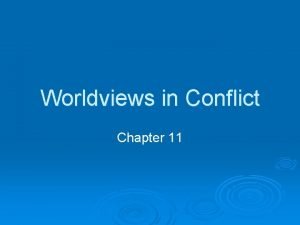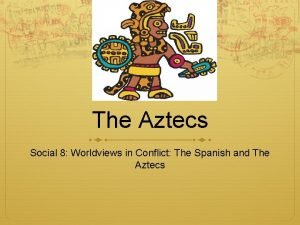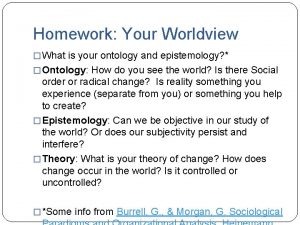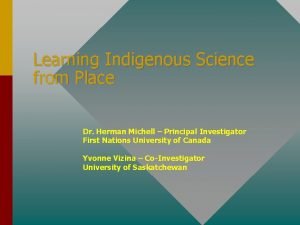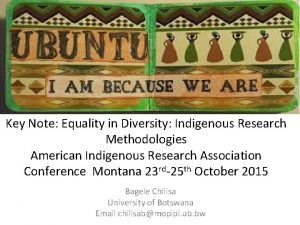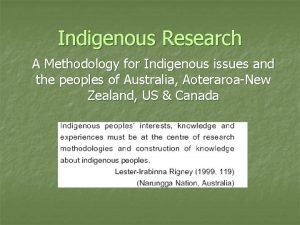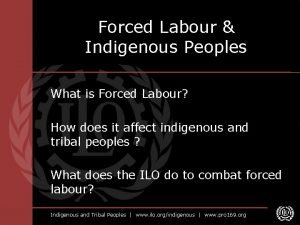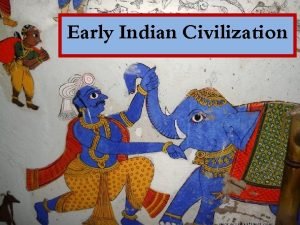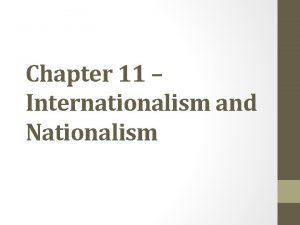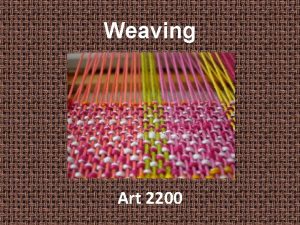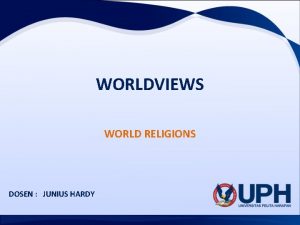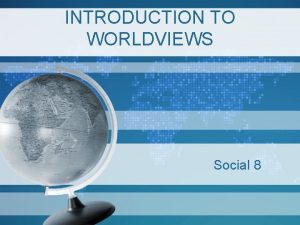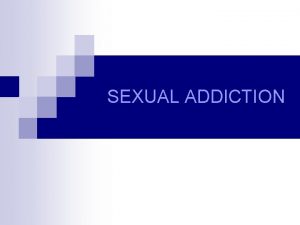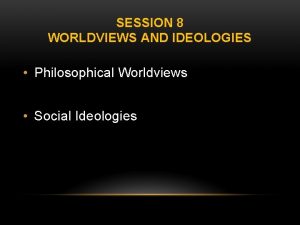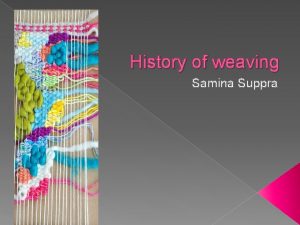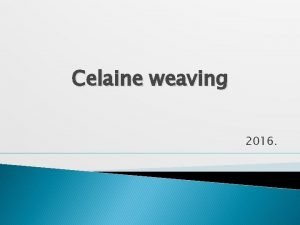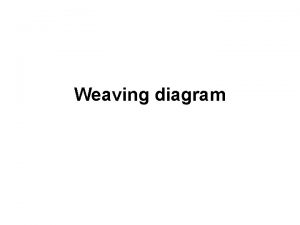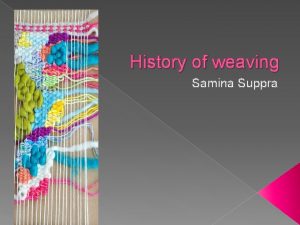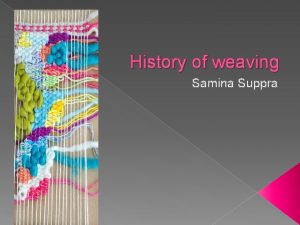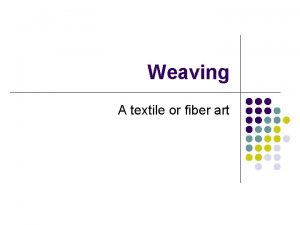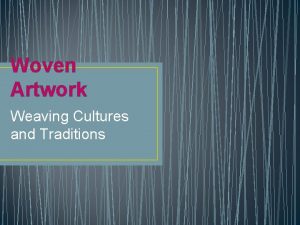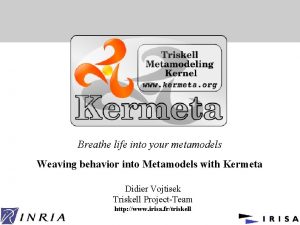Weaving Indigenous Worldviews Into Practice Authentically Gleneagle Sec




















- Slides: 20

Weaving Indigenous Worldviews Into Practice Authentically

Gleneagle Sec.


SORT AND CONNECT First Peoples Principles of Learning And Core Competencies

Activity: ‘Silent Sort’ 1. Lay out all the cards (use FPPL as headings) 2. Silently read each CC card and think about which FPPL heading it belongs under 3. Silently begin to move CC cards under the headings where you feel it best fits

‘Silent Sort’ Activity Continued… 1. Once finished sorting; in your groups of four openly discuss points of connection and decisions made as to why 2. Choose one point to share with the whole group

Using one point of connection your group has made, share a related strategy, approach or activity that you have used or might use in your classroom.

How do I weave Indigenous worldviews into my practice? (Two Ways) 1. Connecting Content with: • • 2. • • • Pictures/Art Artifacts Inquiry Projects Themes/Stories/Legends Indigenous Worldview: Circles (small & large) Experiential Learning (place-based/ hands-on) Story/Oral traditions Compare (cultures/traditions/perspectives) Inquiry Model (see/wonder/inquire) Reflection

Example of Weaving Indigenous Pedagogy and Content using First Peoples Principle of Learning: • Learning is embedded in memory, history and story

Artist: Dylan Thomas What story might this picture tell?

Through the lens of your subject area or grade level; How are these pictures and your subject area connected?

Connecting Story and Place: An Example https: //www. youtube. com/watch? v=b. R 7 Vbq 3 q. F 0 I The Two-Headed Serpent: A Story from the Squamish Nation

Next Steps: Decide on a topic Decide how you are going to connect/weave Indigenous worldviews (through content or practice) Try-try

Stuart Pagaduan

First Peoples Principles of Learning Headings Learning ultimately supports the well-being of the self and family, the community, the land, the spirits, and the ancestors. Learning involves generational roles and responsibilities. Learning requires exploration of one’s identity.

Learning involves recognizing the consequences of one’s actions. Learning involves patience and time. Learning is embedded in memory, history, and story.

Learning is holistic, reflexive, reflective, experiential and relational (focused on connectedness, on reciprocal relationships, and a sense of place). Learning recognizes the role of indigenous knowledge. Learning ultimately supports the well-being of the self and family, the community, the land, the spirits, and the ancestors. Learning involves generational roles and responsibilities. Learning involves recognizing that some knowledge is sacred and only shared with permission and/or in certain situations. Learning requires exploration of one’s identity.

Core Competencies Cards Collaborate to plan, carry out, and review constructions and activities. Developing ideas. Self-regulation. Explain/recount and reflect on experiences and accomplishments. Relationship and cultural contexts. Well-being. Building relationship.

Connect and engage with others Novelty and value. Personal strengths and abilities. Solving problems in peaceful ways. Acquire, interpret, and present information. Generating ideas. Self-determination. Valuing diversity.

Personal values and choice. Contributing to community and caring for the environment.
 Gleneagle secondary
Gleneagle secondary Gleneagle secondary course selection
Gleneagle secondary course selection Persuasive essay quotes
Persuasive essay quotes What are some examples of worldview
What are some examples of worldview Four philosophical worldviews
Four philosophical worldviews Stewardship worldview
Stewardship worldview Human centered worldview
Human centered worldview How are worldviews formed
How are worldviews formed Three major environmental worldviews are
Three major environmental worldviews are Chapter 11 worldviews in conflict
Chapter 11 worldviews in conflict Worldviews in conflict: the spanish and the aztecs
Worldviews in conflict: the spanish and the aztecs Major worldviews chart
Major worldviews chart Indigenous axiology
Indigenous axiology Traditional mi'kmaq medicine wheel
Traditional mi'kmaq medicine wheel Examples of indigenous
Examples of indigenous What is indigenous research
What is indigenous research Indigenous methodologies
Indigenous methodologies Indigenous knowledge systems tok
Indigenous knowledge systems tok Indigenous name for forced labour
Indigenous name for forced labour Indigenous aryans
Indigenous aryans World council of indigenous peoples
World council of indigenous peoples
